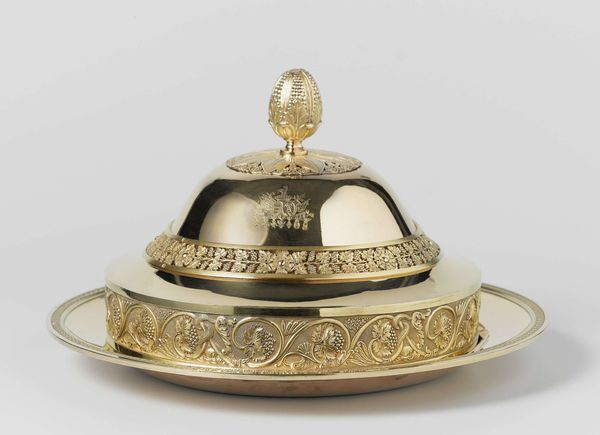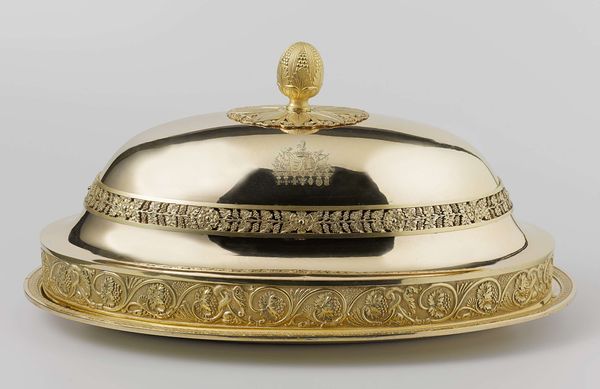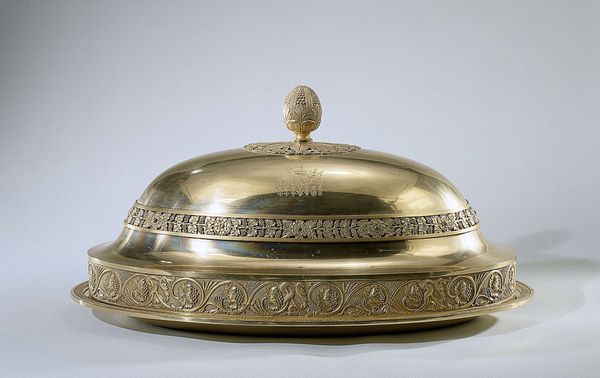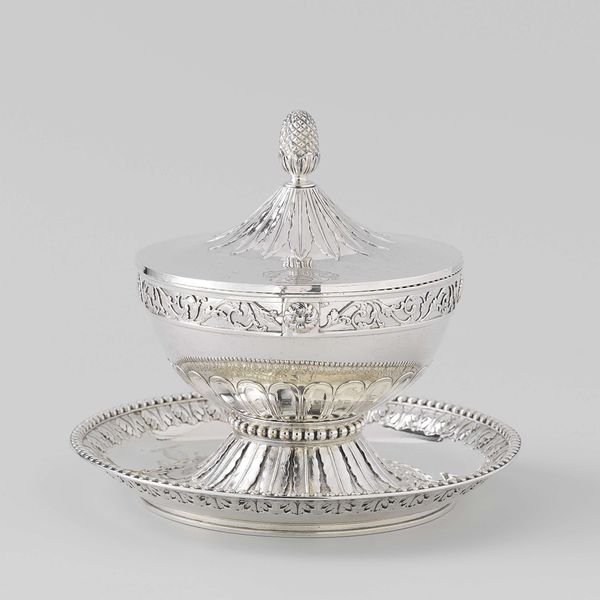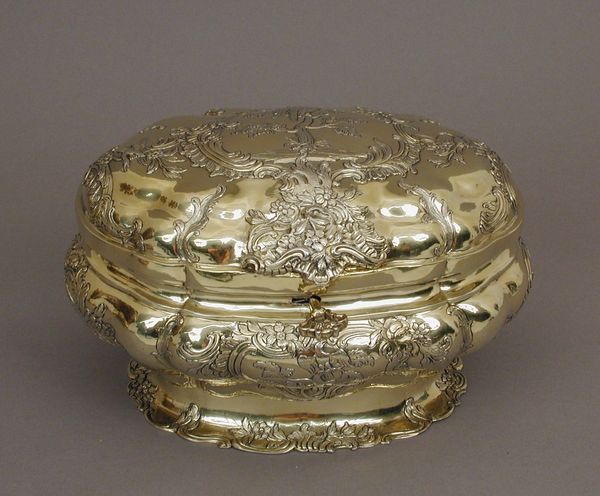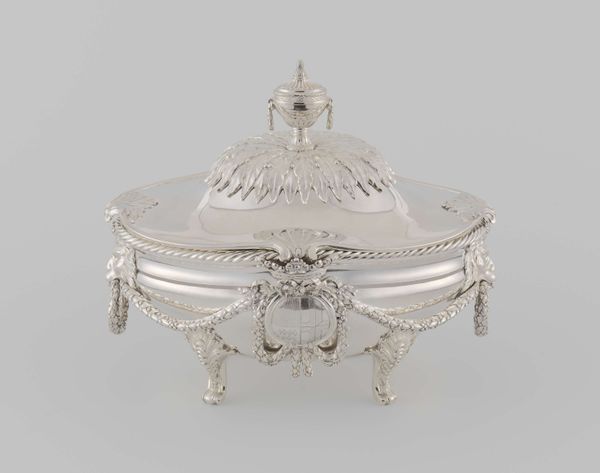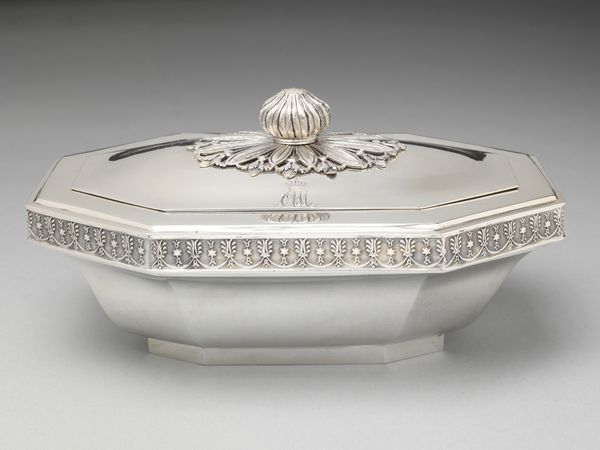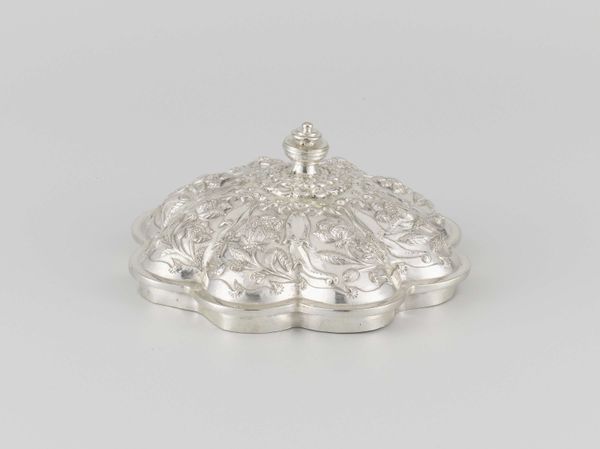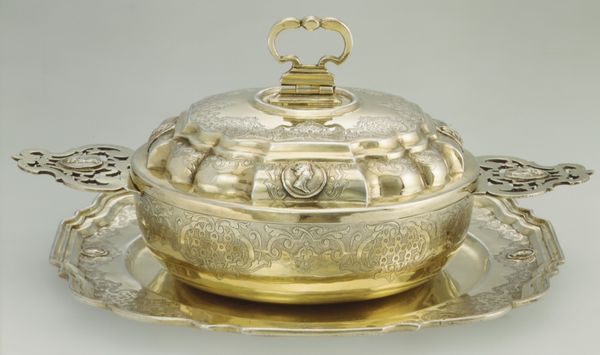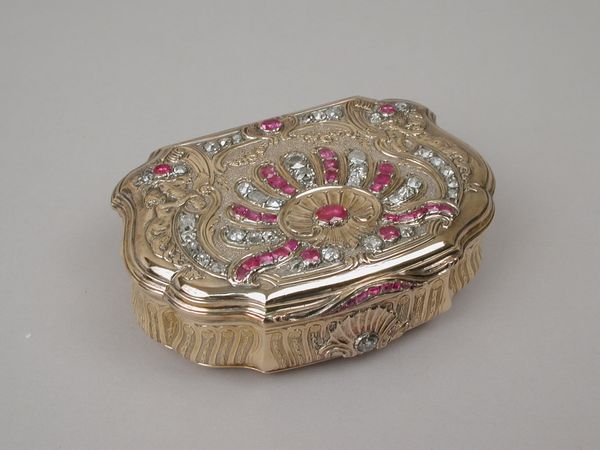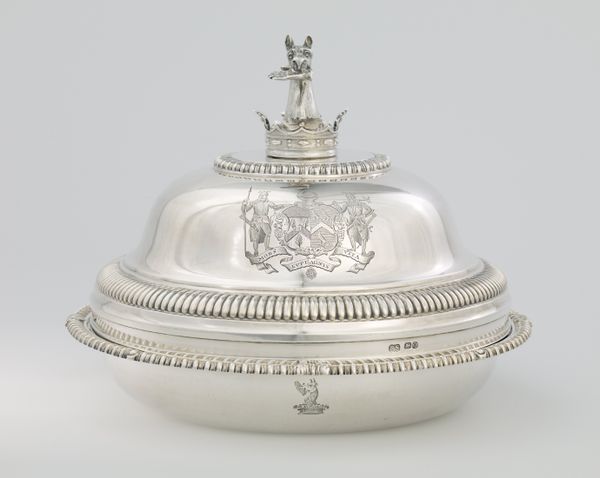
silver, metal, gold, sculpture
#
neoclacissism
#
silver
#
metal
#
gold
#
sculpture
#
decorative-art
#
gold element
Dimensions: height 22.2 cm, diameter 45 cm, depth 27.1 cm, weight 3135 gr
Copyright: Rijks Museum: Open Domain
Editor: Here we have the Oval dish cover, crafted in 1819 by Jean-Baptiste-Claude Odiot, using silver and gold. Its lustrous finish and symmetrical ornamentation exude elegance. What stories do you think this piece whispers from its gilded surface? Curator: Oh, doesn't it just gleam with an aura of decadent dinners long past? It’s Odiot at his Neoclassical best. See how he's tamed the silver, molded it into this disciplined form, a monument to luxury, almost. The acanthus leaves whisper Roman grandeur, don’t they? I can almost hear the clinking of champagne glasses and polite, hushed gossip! What catches your eye most? Editor: Definitely the precision of the engraving—those floral motifs seem so delicate, almost impossibly so on metal. Were such covers purely decorative, or did they serve a more practical purpose? Curator: Both, my dear! Utilitarianism cloaked in breathtaking beauty. Silver retains heat beautifully, so yes, it kept your pheasant warm, darling. But imagine the statement it made—the sheer artistry displayed before your guests. It's not just food; it's theater! Though, frankly, I'm more fascinated by what it conceals… the potential within, if you will. What visions bloom when you imagine the contents? Editor: It conjures up visions of lavish banquets! Thinking about what’s underneath as an artistic device—a blank slate prompting the viewers imagination, that makes this even more interesting. Thanks! Curator: Precisely! That shimmer… it holds untold possibilities. A delicious mystery served with impeccable style. Don't you agree? It makes you rethink ‘dinnerware,’ doesn't it?
Comments
No comments
Be the first to comment and join the conversation on the ultimate creative platform.
